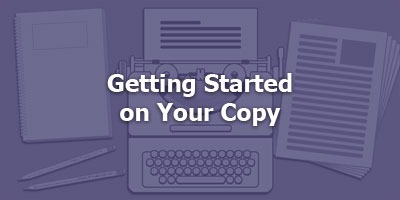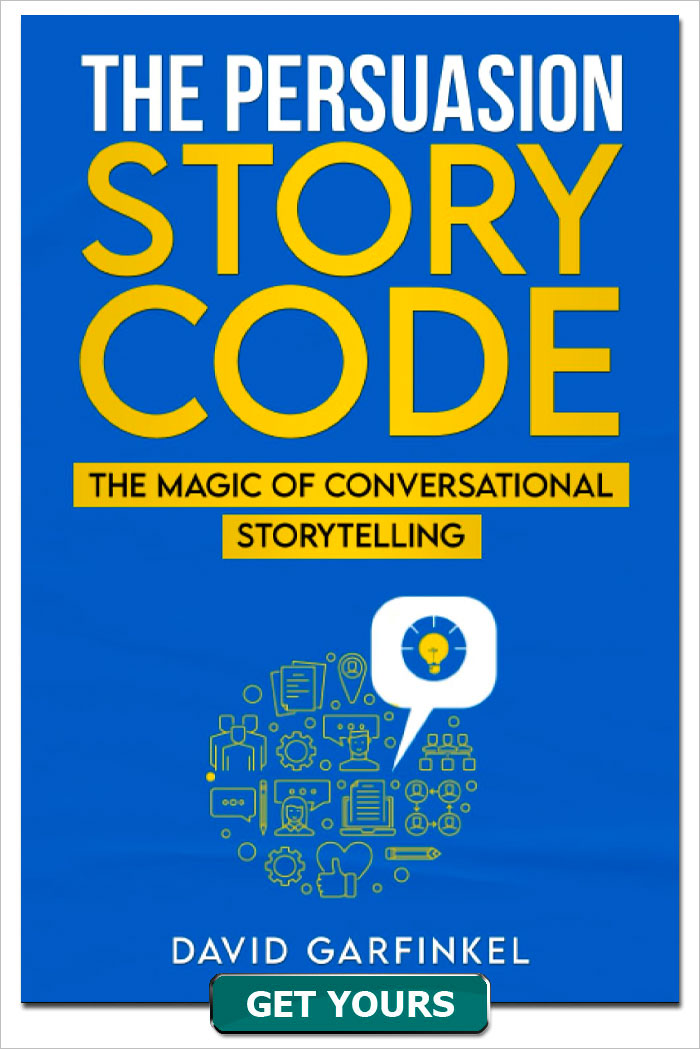Episode 010 - Getting Started on Your Copy
Published by: David Garfinkel on 06-26-2017
Tweet
Looking for some tips on how to get over the blank page blues? We've got you covered. This week's episode is all about how to get started when you're in a slump.
I used to take a lot of road trips, especially when I was in college. 500 miles from Ann Arbor, Michigan to Rockville MD. Back in the day, the length of this trip home was never a problem for me. But getting ready to go was.
I was a worry-wart. Did I have everything packed? Was my tank full? Did I have enough food and coffee for the trip?
Then one day I made three important discoveries:
- Gas stations
- Restaurants on the turnpikes
- And stores near home in case I forgot something.
With those discoveries, hey – getting ready was a LOT easier, and I knew in 8 to 10 hours of drive time, I’d be back home.
Writing copy is a lot like that. You need to prepare, but the need to over-prepare can get in the way of you getting started. And if you find you’re missing something while you’re writing, you can always take a break and get what you need.
Today we’re going to talk about getting started. This is one of the hardest parts for most people when they’re writing copy. We’ll cover some things you can do beforehand, and three ways to actually start to get words down on the page.
Also, I will share with you some tricks the pro’s use when they get stuck, to keep on track.
But before we get started, a reminder to our listeners:
Copy is powerful. You’re responsible for how you use what you hear on this podcast. Most of the time, common sense is all you need. But if you make extreme claims… and/or if you’re writing copy for offers in highly regulated industries like health, finance, and business opportunity… you may want to get a legal review after you write and before you start using your copy. My larger clients do this all the time.
OK, that’s good to know.
Now let’s get right into the belly of the beast – getting started writing your copy!
Preparation
Before you start writing, you need to have done some research. The reason for that is, if you haven’t done research, it will be harder to write anything, and what you will be writing will be off the top of your head. That’s bad for a lot of reasons. So let me tell you about the minimum and the maximum research you should do:
- Minimum: product / how it works / what its strengths and advantages are. How it was developed. What makes it unique. What would make it appealing for others to buy.
Other kinds of research: The sales letter might work just with product research, but it will work a lot better if you do customer research. Who is your customer; what is their biggest problem that you can solve; how do they talk about the problem.
And the icing on the cake with research: Competitor research. What else will customers be looking at? Even look at competitors’ sales letters. You can go so far as to put together a matrix comparing all products side by side so you can see where you have definite advantages.
Why is this so important? Because it gives you facts to start from. Your copy will be a lot more solid and believable that way.
Other things in preparation that make getting started a lot easier:
- Outline. Some people like this, others don’t. Advantage of an outline is you know where you’re going next. You can see the flow of the letter all at once. You can do very high level outlines, or detailed outlines. Either kind works if it helps you get a sense of the whole. Outlining software I use: OmniOutliner for Mac. Lets you collapse the outline. You can also use mindmapping software to outline – I’ll talk more about mindmapping later.
- Get clear on the goal of what you’re writing. Who do you want to do what when they read it? How do you want that person to feel?
Getting started
- You really need to be able to focus on writing and nothing else. That means no distractions. No TV, nobody talking to you. No email. No facebook. Just writing.
- Gene Schwartz method / pomodoro method. Short segments of 25 to 33 minutes. Pomodoro means tomato in Italian. You can find physical tomato timers online, as well as virtual tomato timers (called pomodoro timers). Gene Schwartz used a digital timer and punched in 3333. The idea is, you have a limited amount of time. You don’t need to rush. Just see what you can get done in that time, knowing you can stop when the timer goes off.
-Talk it out to another person. Sometimes you’ll discover things speaking that you won’t find when the words are totally inside your head. It’s good to record in any case and then transcribe it.
- “Theatre of the mind” technique: Imagine you’re face to face with the prospect and you want to sell them what’s going into your copy. What would you say? What would they say in response? How would you respond to that? The more conversational you can get this in your mind, the better off you are. Of course, when you actually start writing the copy, it needs to be a one-way conversation – you, to the prospect.
- Start with the close. Or at some other part of the copy than the beginning. Write bullets first. A lot of copywriters really get into the mindset of the whole piece by writing a lot of bullets before they write anything else. Or write the guarantee. Or anything. Sometimes just getting started on something will get the flow going for the whole piece of copy.
Tricks pros use to keep going
Take a break. Before you feel you need to. Short spurts of work followed by short breaks. Take a walk, or listen to some music, or meditate. Don’t do anything too distracting or tiring, though. Save the liquor cabinet for later.
Change location. You can take your computer or a pad of paper and a pen, and go somewhere else where no one will talk to you and you can work undisturbed. Sometimes a change of scene will make it much easier to write.
Mindmapping. This is good beforehand, as an outlining tool. Sometimes while you’re writing you get a lot on your mind and it’s better to organize it visually so you can get back to the task itself, of writing the copy. You can learn how to mindmap on paper, and there are lots of free and inexpensive mind-mapping programs.
Oh, and we announce the winner of the iTunes contest in this episode as well. Was it you? Only one way to find out.
Keywords: mind maps bullets getting started templates outlines









